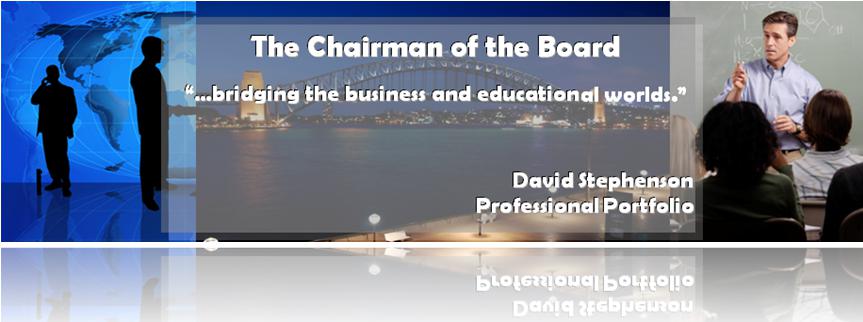Broad Perspective
With the advent of the digital age, our
culture is changing exponentially. It is no longer based on an
industrial style or factory model of life and education as identified
by futurist Alvin Toffler in "Revolutionary Wealth."
That said, our current education system--for the most part--has
not
realized that the needs of
the students to best prepare them for the 21st century world they will
become a part of has NOT changed
much to meet these needs, let alone define them. Currently,
today's system of
education is designed for mass produced/ factory style education in
most of the curriculums. In my opinion, there is a need to break
from the
traditional to prevent “obsoledge”
and help design
opportunities for students to be producers and be active participants
in the educational process. To take more ownership. Now as
an innovative
educator, I understand that the way it has always been done no longer
serves to prepare today’s students. As educators, we
need
it to prepare
students for nonindustrial age strategies, skills, projects and
processes daily
in the classroom. A major factor of this information age is digital
literacy of the student population today--the ability to access
various computer resources and be
able
encode and decode meaning from them.
Another book that really stuck out in the program was Pink’s "Whole New Mind"
showed that right brainers will rule the world. Due to
Automation, Abundance, and Asia there is no need for left-brain or
linear thinking. We need to prepare our students to not merely
understand the left-brain, print based, and industrial thinking, but to
also incorporate something else to go beyond the linear. Pink
highlights 6 senses, "MOPEDS,"
to help to be successful in our changing
society. Meaning is the need to understand what the thing is.
Orchestra/symphony is systems thinking and how do all of the variables
come together. Play is the way to explore or discover rules and
the ways to use them to create something new. Empathy is the
starting point to understand multiple perspectives to guide what is
wanted. Design is using principles, processes, and patterns with
the application of intent and the removal of happenstance. Story
is not just the facts but when all the pieces are put together.
Incorporating these ideas in my lesson design and delivery makes me an
innovator. Through the teacher’s design process they must keep
PICKLs (problem solving, information users, community participants,
knowledgeable, literacy, and design environment.) in mind to provide
students with opportunities for meaning through the use of various
tools and experiences. For learning happens between the
interaction of mind and culture and I have only begun to discover ways
to use new and current technology to meet the emerging needs of
students and society. These technologies must be evaluated for the
affordances they offer to meet student and teacher goals.
Practical Application
I have taken these instructional tool concepts
and applied them
in my teachings and actions
in four areas. First, I co-founded our schools Young
Entrepreneurs club, where the students learn (albeit at a high level),
advertising concepts, stock market tracking, business plans, and how to
start a company. It is the largest club at Farmwell, with over 60
active members showing up to work. At our fund raiser, we sold
concessions for a local charity. We used the authentic problem of
them staffing a concession sales company, with different roles and
areas for the students to perform. With our guidance,
they came up with roles (advertising, set up, sales, cash, inventory)
and plans to sell during the intermission. We were extremely
successful and the students
loved it!!
Second, It has been noted before but I will
breifly
mention it here. The projects and activities that I use are all
exclusively real world oriented and innovative. Here, my students
are immersed in performing different activities and solving problems
for businesses where they are "employed." They are in the
roles of advertisers, businesss, researchers, editors and job
applicants.
I have also developed
and deployed a robust wiki
project for starting a company. This lesson plan centers around the
kids are presidents of business development/concept development.
They have a high level business plan which helps guide and
motivate students to think about potentially starting a company with
their project or service ideas. All of these are engaging and
require students to "think outside the box" while completing them.
Third, I have
also started to deploy my innovative styles in my current consulting
opportunity for curriculum development with a local company called
Hands in Motion. With this opportunity, I am
putting in practice keyboarding and technology lesson plans at Hands in Motion for younger learner
but still using the same concepts as ACTS, PICKL to keep the course
engaging and meaningful for the students. All of the course under
the technology
area and summer camps are being designed by me, using ITSer
concepts to make it fun
and relevant to the learners.
Lastly, I came up with a multimedia game to benefit student review for
the testing. Using the concept of video games as a learning
and reinforcement tool, the student go through the adventur as Keyboardman's side kick
QWERTY. This has proven effective and engaging for the students
to review and learn hand and finger combinations, technique and other
aspects of my keyboarding class at home or in my lab.
|

